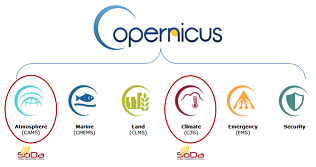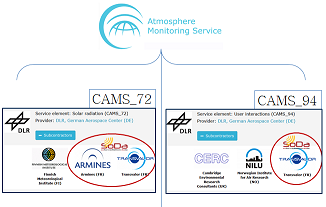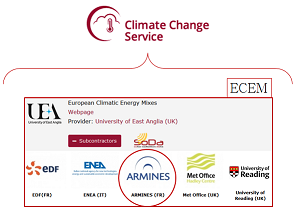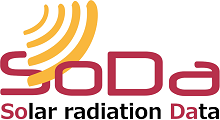Copernicus
SoDa and Copernicus, a constructive collaboration |
CopernicusCopernicus, previously known as GMES (Global Monitoring for Environment and Security), is the European Programme for the establishment of a European capacity for Earth Observation. It consists of a complex set of systems which collect data from multiple sources: earth observation satellites and in situ sensors such as ground stations, airborne and sea-borne sensors. It processes these data and provides users with reliable and up-to-date information through a set of services related to environmental and security issues. The services address six thematic areas:
Based on the Copernicus services and on the data collected through the Sentinels and the contributing missions, many value-added services will be created and tailored to specific public or commercial needs, resulting in new business opportunities. In fact, several economic studies have already demonstrated a huge potential for job creation, innovation and growth. All data and products from the Copernicus programme are free and unrestricted for all users. The SoDa team (either Transvalor or MINES ParisTech, or both parties at the same time) is involved in CAMS and C3S. |
 (Click on the image to magnify) |
CAMSThe Copernicus Atmosphere Monitoring Service (CAMS) has been developed to meet the needs for a better knowledge of the atmosphere composition to support policymakers, business and citizens with enhanced atmospheric environmental information. CAMS delivers operational services within 5 themes:
Among the numerous tasks of CAMS, the SoDa team is involved in CAMS_72 and CAMS_94. CAMS_72 ensures the operational aspect of the services CAMS radiation service and CAMS McClear. |
 (Click on the image to magnify) |
C3SThe Copernicus Climate Change Service (C3S) is still in the development phase and will combine observations of the climate system with the latest science to develop authoritative, quality-assured information about the past, current and future states of the climate in Europe and worldwide. The 27-month EU C3S project European Climatic Energy Mixes (ECEM) started in Nov. 2015 and is led by the University of East Anglia (UEA, UK) in collaboration with Electricité De France (EDF, France), the Met Office (UK), ARMINES (France), the University of Reading (UK) and the Agency for new technologies, energy and sustainable development (ENEA, Italy). The main purpose of ECEM is to enable the energy industry and policy makers to assess how well energy supply will meet demand in Europe over different time horizons, focusing on the role climate has on energy supply and demand. They develop a particularly efficient tool entitled the ECEM Demonstrator to explore different scenarios and models that we invite you to test by yourself.
|
 (Click on the image to magnify) |
